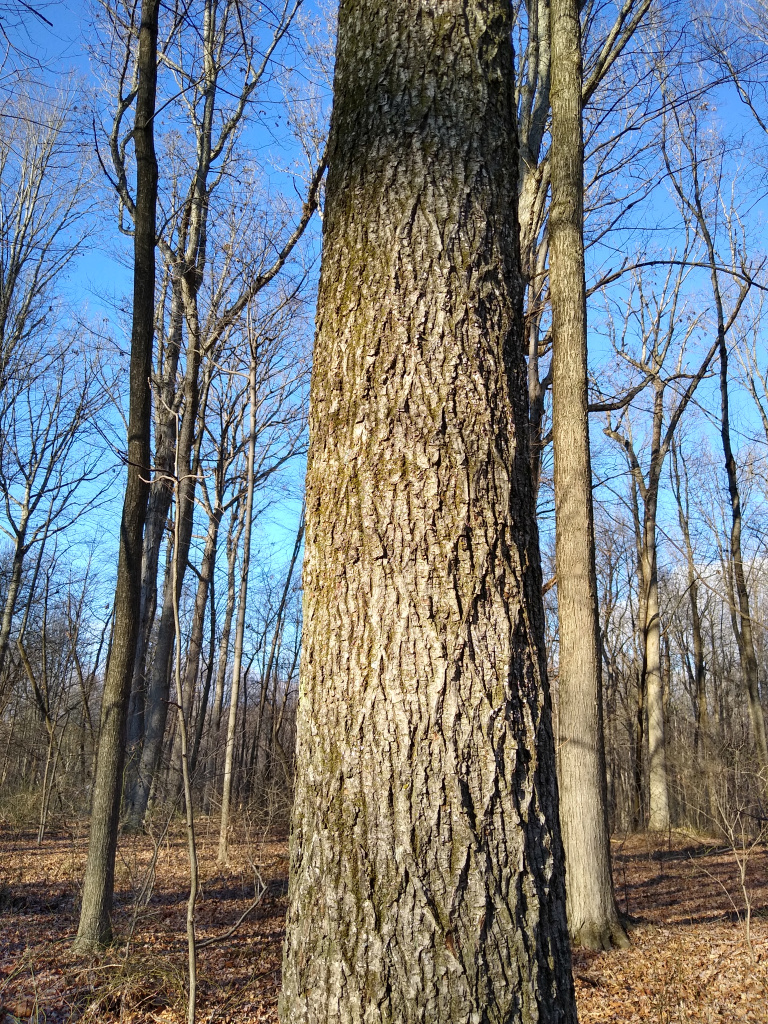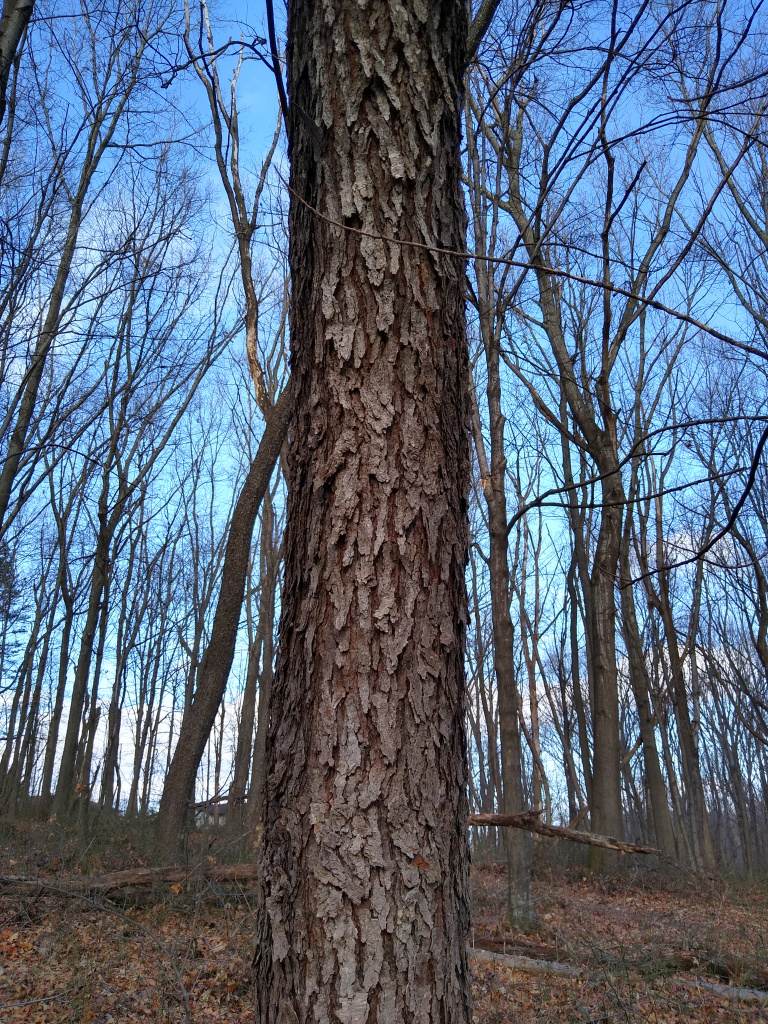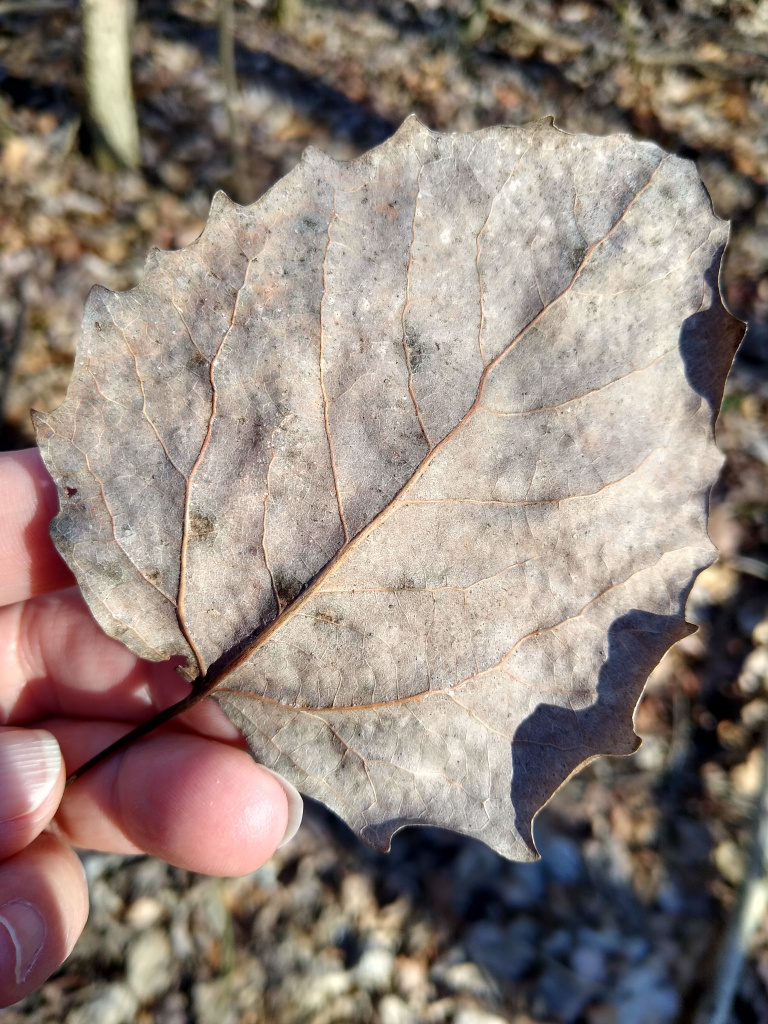Field Notes: Wandering the Winter Woods
March 16, 2021 11:53 am
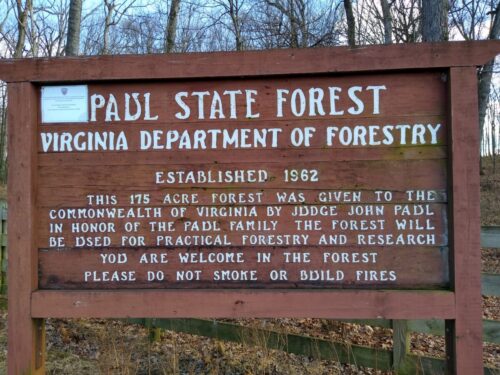
By Ellen Powell, VDOF Conservation Education Coordinator
A few weeks ago, on a cold but sunny day, I visited Paul State Forest in Rockingham County for the first time. It was a great place for a winter woods walk.
The Paul became a State Forest in 1962 – a gift to the state from a local judge, John Paul. The forest is included in the Department of Wildlife Resources’ (DWR) list of Virginia Birding Trail sites. DWR describes it quite accurately as “an island of forest in a sea of farmland.” The Paul is located on Clover Hill Road near Dayton, just north of Ottobine (map). Look for the old-school wooden sign at the parking area!
The Paul’s 173 acres of mature hardwoods and scattered pines provide winter foraging and roosting habitat for many birds. The day I was there, the woods and edges revealed a typical winter bird crew: red-bellied and downy woodpecker, dark-eyed junco, white-throated sparrow, ruby-crowned kinglet, tufted titmouse, Carolina chickadee, Carolina wren, and northern cardinal. I hope to go back in late April, when the trees should be alive with migrating warblers.
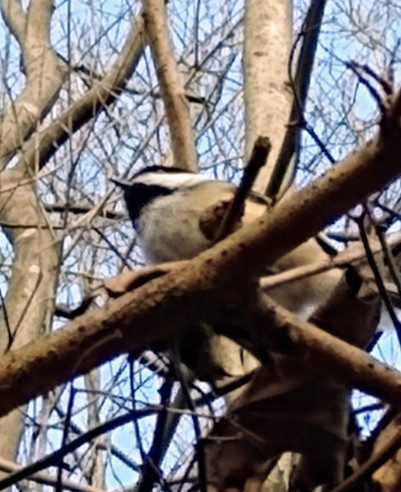
Stumps reveal that trees are sometimes harvested from this forest. Forest management is one key distinction between State Forests and State Parks, with which they are sometimes confused. State Forests are managed for multiple uses, or sometimes quite specific ones, depending on deed restrictions set forth by the donor. Many of our State Forests pay their own way as true “working” forests. In fact, no state general funds are used to maintain State Forests, and 25% of any timber sale revenue is returned to the county where the forest is located.

Winter is the perfect time to study and appreciate tree bark in a hardwood forest like the Paul: the pale shagginess of white oak, diamond-patterned furrows of mockernut hickory, the “burnt cornflake” look of black cherry, and lots of other interesting textures. I found an unexpected species during my walk at the Paul: bigtooth aspen. I recognized its smooth, olive-tinged bark, then confirmed my identification with some nearby fallen leaves.
In winter, the understory of the Paul is quite open, in part because goats were posted there to eat invasive plants last summer. Thankfully, they didn’t do much damage to the native spicebush – perhaps because it tastes like lemon furniture polish? The spicebush flower buds were already showing yellow when I visited; if you visit now (mid-March), they should be in full bloom.
Like many of our State Forests, the Paul is easy to miss if you aren’t looking for it. It has a small parking area on a country road, and no facilities other than a few picnic tables. But the views from the parking lot and forest edges are lovely, and the forest roads are easy to hike, making it a perfect place for families with young children. Kids outdoors tend to find their own entertainment, and everybody can learn unexpected things from a walk in the woods. (For example, after pulling a large pine branch off the path during my walk, I discovered that hand sanitizer is great for removing pine sap from hands.)
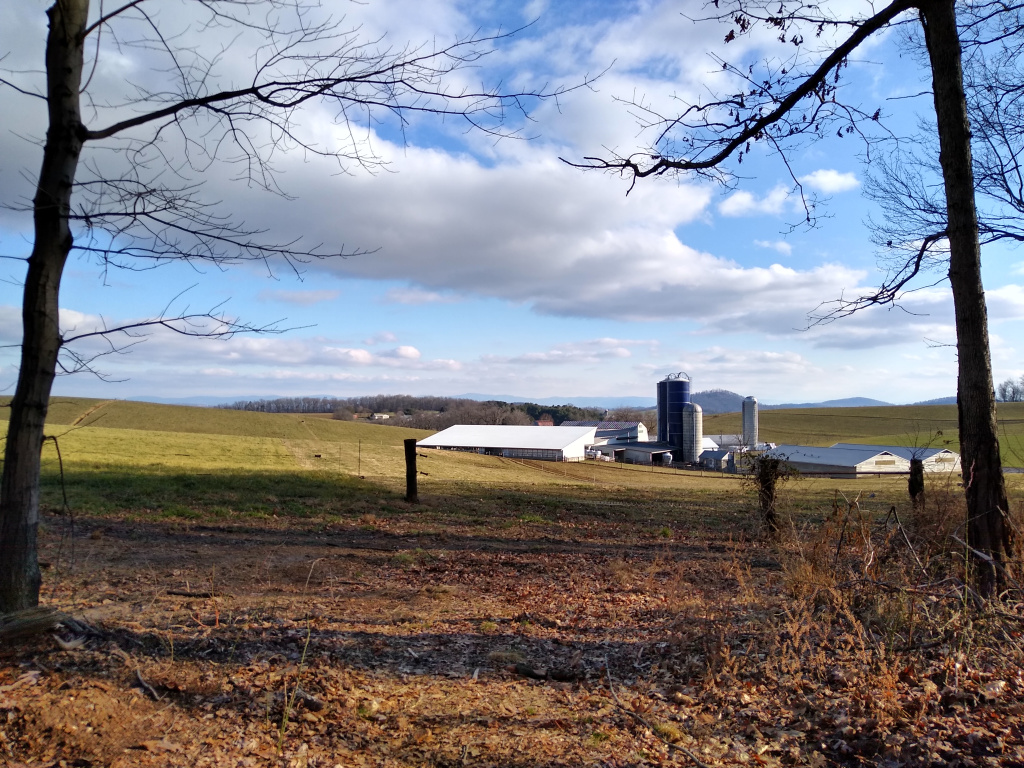
In these days of virtual instruction, why not create your own field trip with a visit to a State Forest? You can take along some of Virginia Department of Forestry’s activity ideas for kids to try outdoors. Bonus: They’re fun for adults too!
Tags: Birds, Education, Spring, Wildlife
Category: State Forests

